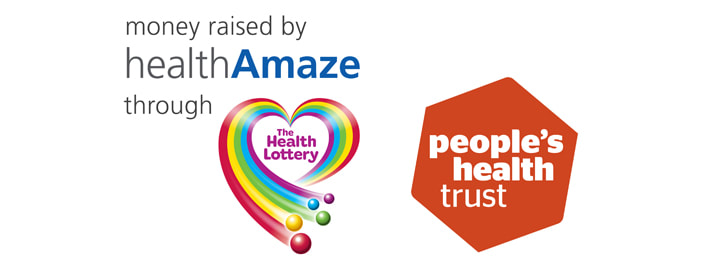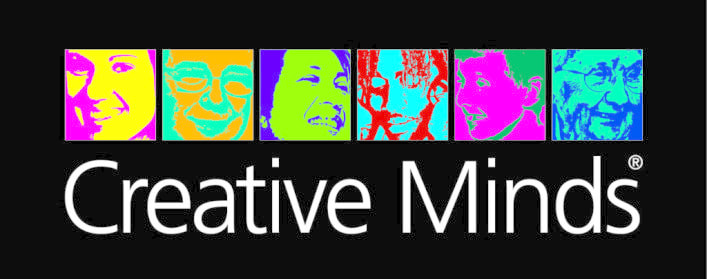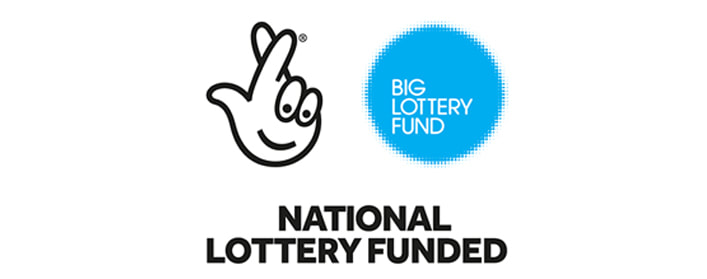|
0 Comments
Summer Cabaret Show including dance, singing, physical theatre, makaton and drama.
On 11th July 2023, CoActive Arts and Yew Tree Youth Theatre came together to create a enjoyable summer cabaret show in which there was dancing, singing, physical theatre, drama and makaton and it was a great evening for everyone involved, and it was at The Pit Club in Fitzwilliam who were welcoming and made it such a good atmosphere to perform in and we had a great time. During the summer we are still doing sessions, so this week we are at Appletree on Wednesaday 26th July for Spectrum's 10th anniversary,and the Ridings unit on Thursday and Friday, in August we are doing 1 session per week, so Wednesday 2nd August we are at the Hepworth, on Thursday 10th and 17th August we are at Appletree Garden and Wednesday 23rd August it's to be confirmed. Next year it's our 20th anniversary since we were formed, so we are thinking of what we are going to do to celebrate this milestone. If anyone has any ideas, let us know. Digital exclusion was rife as the pandemic exasperated issues as people now rely on digital technology more than ever before. But much of the online world simply “shut out” people with special needs. Yet a lot of people with neurodivergent minds and SEN aspire to work in digital.
A new course aims to empower digital entrepreneurs and content creators with Special Educational Needs to give them the voice, choice and skills to start their journey into a digital career. From a job in digital to starting their own blog or running a social media marketing business. Learning key digital skills are not only sought after tools for digital enterprises but for all organisations plus they are transferable. The exciting world of digital can open an abundance of opportunities but currently it’s exposing and reflecting barriers people with special needs face in society today. Reduce digital exclusion and creating the content to cause change as we hear the voices of those ‘shut out’ by a lot of the online world through our Digitally Active Project. With soaring unemployment, digital exclusion and a lack of opportunities for those with special educational needs (SEN) following the Pandemic, a new course aims to “give hope” and up-skill people with an interest in digital. “We want to look to the future rather than focus on the detrimental impact the Pandemic has had on already disadvantaged people. “We hope to empower participants to start creating content, sharing stories and most of all to give people confidence,” said Julie a course organiser and co-founder of Digitally Active whose son is on the autism spectrum. “Unless you want to do cooking or gardening there’s not a lot to choose from,” explains Julie Crossfield. Julie’s son is a keen sports blogger and social media marketeer so what was available pre-Pandemic wouldn’t have harnessed his skills in these areas. Julie and other parents have also witnessed that employers are now even more cautious to take on disabled employees, volunteers and provide work experience due to having to deal with the rising cost of living and the impact Covid continues to have on their business. “They worry they’ll have the time to show new employees and volunteers the skills needed to carry out jobs but that’s where we come in to ensure that all our trainees feel confident in what they can offer,” added Julie. A huge part of training is the confidence building as it’s not always a “skills gap but a promotional lack” as many ‘disabled’ people don’t even get to the interview process or have the confidence to apply with a large proportion of disabled people unemployed or economically inactive,” said Sophie Mei Lan who delivers Community Journalism and Content Creation Training to communities through the project, CoActive Arts and Community Media CIC. The national unemployment rate of disabled people has risen from 45.9% to 47.7% last year with employers even less likely to take on disabled employees. As it’s such a big issue Digitally Active have joined up with Wakefield Charity CoActive Arts which brings together adults with learning disabilities and provides a space to belong for everyone. CoActive co-founder Jody Gabriel, said: “The social model of disability tells us that we have to change the environment to accommodate the person, while the medical model of disability would prefer to change or treat the person so that they fit in better with their environment. This digital skills and journalism course promises to do both. Make adjustments to the work place and give support so people with atypical cognition can thrive and navigate the situation, while at the same time , teaching skills so people can fit in and function in the digital world. It's about playing to our strengths.” CoActive and Digitally Active are piloting their first free digital skills course in order to train and empower budding digital entrepreneurs and content creators with Special Educational Needs to give them the voice, choice and skills to start their journey into a digital career. From a job in digital to starting their own blog or running a social media marketing business. “Learning key digital skills are not only sought after tools for digital enterprises but for all organisations because they are transferable. “I have witnessed from my community media work alongside people with impairments that by making necessary adaptations and forging a more inclusive environment, with the right processes and technologies, many people are able to work and actually have some much greater skills in specific areas,” added Sophie. The team behind the project which is funded by the UK’s Community Renewal Fund hope that this will grow into an enterprise on its own and connecting businesses with talented trainees to carry out a range of digital jobs. “In many incidences, people have lost the confidence to seek employment or they need support to even access the relevant opportunities online. So we hope to start to change the rhetoric around disabled people and their ‘lack of potential’, because not only are these humans missing out but the world is a much poorer place without their powerful voices.” The 5-week training course for neurodivergent adults and/ or those with disabilities in a range of content creation, digital skills and communications which has been part-funded by the UK Government through the UK Community Renewal Fund. To book, contact: Julie.crossfield@icloud.com or go to: https://www.yorkshirefamilies.co.uk/work-with-us-join-our-team/ The UK Community Renewal Fund is a UK Government programme for 2021/22. This aims to support people and communities most in need across the UK to pilot programmes and new approaches to prepare for the UK Shared Prosperity Fund. It invests in skills, community and place, local business, and supporting people into employment. For more information, visit https://www.gov.uk/government/publications/uk-community-renewal-fund- prospectus From feeling isolated by society and then physically and mentally trapped inside their homes, adults with learning disabilities who have experienced more challenges than most in recent times have managed to remain connected thanks to the power of creative arts. Wakefield-based CoActive Arts Charity has been working with adults with learning disabilities throughout the lockdown period via zoom and now in human as part of Wordfest 2021 as they prepare to showcase extracts of physical theatre, sculptures, and scripts they created throughout the Pandemic. Not So Alone will be performed as part of Wakefield Council’s literary festival Wordfest 2021 which is centered around the theme of ‘making words count.’ Jody: “We have had to change the way we work over the pandemic, but we have really missed being able to gather in large groups and being able to perform. It will be an important moment for us to be able to show our work in our new home in ‘The Make Space,’ in The Ridings Shopping Centre. The performance will be 15-20 mins with a further 10 minutes for Q&A. The performance is at 12 noon inside Make Space next to Poundland inside The Ridings on Saturday 2nd October 2021. All about Wordfest 2021 which runs from 1-31 October 2021: Returning in 2021 WordFest will have the theme of using words to capture our wondrous planet and combat climate change. The festival will blend digital activities, fun family events with local creatives, and community library activities and experiences, all promoting the message: 'Make Words Count'. You can read performer Dan’s blog all about the show below too: CoActive’s mini-performance of Lily and Cedric love story On Saturday, October 2nd, a small group of CoActive members will be performing a short section of their Lily and Cedric performance. It came about during the 1st or 2nd lockdown when the writers’ group wrote a story and they came up with the 2 character names and how the story would develop. So what you should expect is: the 4 seasons and how the Lily’s and Cedric’s perform in those 4 seasons and different things will happen depending on the season, you should expect some happiness, sadness, and loneliness too. You should also expect some romance, I love being a part of CoActive because we have some serious stuff such as when we are performing, but we also have some fun stuff like art, creative dance, line dancing, yoga, and other things too. All the members are friendly and approachable too, so are the staff who work extremely hard to make CoActive sessions fun and want to go to. There are some members who have been around since the start, some for a couple of years and we occasionally have some new starters who want to have a taste of it, and they don’t always come back but some do come back. It feels exciting to be performing in public but some of the members do get nerves too, but they don’t show it. This will be the first performance in front of people since January 2020, so hopefully, it’ll go well! A Wakefield-based creative arts charity has managed to connect more people, through their artistic approach to continue helping adults with learning difficulties through arts, dance, media, digital and life skills.
CoActive Arts has totally transformed to continue helping adults with learning difficulties, after fearing that the people they supported would be isolated. As each individual they work with has different needs, talents and interests, the team of artists have worked closely with group participants, carers and support services to be able to continue to provide weekly sessions and support by adopting a multi-platform approach. From weekly hand-crafted DVDs created at home by the artists who normally deliver in-person art, dance and drama sessions, CoActive continue deliver sessions in a new interactive way, as well as live videos online, group chats online, phone calls, Zoom sessions and hand delivering activities for people to continue enjoying sessions at home. Co-founder of CoActive Jody Gabriel, said: "We were really concerned that our member's mental and physical health would deteriorate under isolation. We knew many who have learned to cope by adopting routines and having familiar places to meet and get what they need, and that such a massive change would cause big problems. Many do not have an internet connection, IT equipment or the skills to use it, and so isolation would be especially harsh. We knew we had to use our experience as artists and as a charity to adapt activities like never before to keep people connected and engaged in something positive whilst at home. We committed to creating a magazine style programme of activities on DVD every week. The weekly deliveries contain activity resources for Art including acrylic paint, glue, A3 cartridge paper and hand-made craft resources. We hope the DVD format will help in creating meaningful activity and a structured day. Unlike mainstream TV, we have a personal relationship with people and include contributions from members on the DVD to help us feel connected. Gemma is leading story creation sessions on a live facebook slot for those that use social media, and Mel has led on connecting through Zoom, and more recently facilitating distanced one to one outdoor meet ups between group members. This is leading us to adapt again as hopes grow of the lockdown coming to end, yet the virus remains. While making one DVD delivery I was able to go out on the grass with one member. We both had masks on and remained over two metres apart. We talked and rehearsed a little dance session, using elements that we were both used to from regular sessions. We went through a warm up and created some very basic movements to develop. I was struck by the deterioration in this person's concentration and range of movement. Clearly the lockdown is taking its toll both physically and mentally. It's a mixed picture though, and our interactions are making a big difference for people. Members really look forward to when the DVDs arrive and far from being just a source of entertainment or connection I am seeing people develop artistically in their use of acrylic paint. We are even issuing certificates to celebrate achievements and solid learning criteria being met. Julie Crossfield, who is the mother of one of CoActive’s members, said... At CoActive we have a great team of freelance Community Artists who are able to adapt and bring a range of skills to the situation. We are all really grateful for our funders who have all been quick and proactive to respond to the changing needs. We have received an extra grant from NOVA's Coronavirus VCS Resilience Fund (from Wakefield Clinical Commissioning Group of the NHS). We have worked with our existing funders; Creative Minds, NOVA's 'Live Well Wakefield,' and The People's Health Trust who have formed the backbone of our funding over the last 2 years, and have committed to support us for a further 2 years. For more information, go to: coactive.org.uk and CoActive are also on facebook, instagram, twitter and youtube. MY WEEKLY SCHEDULE PRE-LOCKDOWN VS LOCKDOWN LIFE - CoActive's Dan shares his coping strategies16/4/2020 Covid 19 has brought about a lot of change and uncertainty for everyone including us and our team. One of our members, a part of the CoActive Arts family, Dan, explains how he worried at first with how he would cope to now... he is making the most of staying at home by adapting his schedule during this difficult time.
"How my new week looks currently compared to my old week" By Dan I’ve been used to going to five different groups in different places. However, everyone’s being told to stay at home, unless it’s essential that they go out, so I’ve had to make changes , but I’m trying to make the most of my time while being at home... Here’s how my new life looks: Mondays: I do some social media training over Skype, with someone who knows a lot about this, and I’m learning to say I’ve finished, because obviously they can’t see when I’ve finished doing something. Tuesdays: I try to either have a chill day, or try and do some website work for my parents’ printing business. Wednesdays: I have a 40 minute Zoom meeting with a couple of CoActive staff and members, and we tend to share news, discuss arrangements for the DVD and if there’s anything we’d like to include in the DVD. I also have some more social media training over Skype. Thursdays: I have an online drama session with one of the artists at CoActive on the CoActive Facebook page, and this is all about us typing ideas up for whatever they have said, this usually lasts for about an hour. I also try and have a read through my lines ready for my theatre group meeting on Fridays, which I’ll explain below. Fridays: I have a 40 minute Zoom meeting with my theatre group called In The Sky, and we share one piece of news and then we have a line readthrough and we have to try stay quiet, when others are talking, otherwise it goes wrong. I also have some more social media training over Skype. On a Friday night, I relax have a drink and watch a bit of TV. Saturdays and Sundays: These have changed a lot since coronavirus started, as I have to watch some old football games to fill the void of no sport, which is OK I suppose, but not as good as the current football which I miss badly. But I do get to watch things on TV that I would have had to record and watch on a Sunday morning. My old week used to look like this: Monday – Go to do social media session with Sophie in the morning, then football and multi-sports on a Monday night. Tuesday- Volunteer as a coffee shop assistant at Barnsley hospital on a Tuesday morning, then on a Tuesday night I would go out for tea and a game of bowling with GT Care. Wednesday – I would go to WWMC to CoActive and do their sessions from 10am-3pm Thursday - I would go to WWMC to CoActive and do their sessions from 10am-3pm Friday – I would get picked up by a 1:1 on a Friday morning, and I’d go to Into the Sky theatre group at Pontefract Racecourse from 10am-2pm Saturday: I’d watch my sport all day, then get ready to go to Carlton Club with GT Care on a Saturday night. Sunday: I’d either go to a Featherstone Rovers game in person, or I’d listen to them if they were on BBC Radio Leeds. I would then write a blog post for my sports blog on the game. How has your week changed? At CoActive we have been really busy making plans while we are stuck at home during the Coronavirus outbreak. We are very grateful to receive a grant from The Wakefield Coronavirus VCS Resilience Fund (from Wakefield Clinical Commissioning Group of the NHS administered by NOVA) to do work in order to encourage people to stay at home and to support their mental and physical wellbeing. Starting with our current members, but also reaching out to others, our focus is supporting people who have learning difficulties by: Making regular telephone contact with CoActive members. Conducting a weekly live online session, currently Drama Story Creation. Creating and delivering a weekly magazine type programme on DVD every week. Click here for online version of Episode 1 'CoActive at Home.' Many of our members do not have internet access, IT equipment, or the ability to use it at home and so are especially isolated. Many of these also live alone! All are able to play DVDs at home (and easy to set up if not), so our plan is to deliver a DVD pack every week. The deliveries will contain activity resources and we will develop a lending library of CDs, books etc, making the most of our weekly drop. We hope that this will work give meaningful activity and connect us while separated. Our leading artists will work across their disciplines in the arts to bring stay at home activities, especially in Dance, Drama and Art. We hope the DVD format will help in creating structured activity and a structured day. Unlike mainstream TV shows of this kind we can build and draw on activities people have participated in during groups and to a certain extent we will have feedback to inform future content. For example a photograph taken on the doorstep of art work produced can lead to ideas for the next content. The weekly magazine programme will be sent out in two forms. We are hoping to have features where CoActive members will contribute their news, feelings and creative input. Being careful with the sensitive nature of what people might share, the online content will have much less of this. The hope for the DVD distribution is to create a connected community of friends who are hearing from each other and sharing in the same creative activities. From sending in photos and videos, to relaying messages/greetings via telephone support. We are hoping that support workers, friends and family will play a key role too. CoActive Arts who work with adults with learning difficulties in Wakefield, West Yorkshire offer creative movement, dance and drama sessions as well as life skills. Here one of the group members Dan shares what happens in a session: Creative things to do for adults with Learning difficulties
The sessions are: Creative dance/movement and Art Development Drama Dance and Singing On a Wednesday morning, we split into two groups: Creative dance and Art. The creative dance group come up with ideas of what they want to dance about. At the moment, the creative dance group are working on movements for a musical they could do. Recently, the creative dance group created a piece that they performed at the Ridings, which was based on four things: Twist, Crumple, Stretch and rise and fall. The Art group do art based on what the dancers are doing, so for example Our project at the moment is based on musicals, so the art group are doing art based on that. What I love about the creative dance session is that for the last 2 projects, we’ve done something different to our usual performances, which is perhaps making us think more. We do this session from 10:30am until 12:30pm. On a Wednesday afternoon, our session is Personal development and wellbeing . So at the moment, we’ve been asked to do some artwork by someone called Tony Wade based on the four standards at the NHS, because he told us that too many people with learning difficulties were dying at the NHS, so he’s working with groups across Yorkshire to create some artwork that define these four standards. Me and 2 other CoActive members made sculptures out of wire to show that people were involved with each other, which I thought was a really good thing to make, as I hadn’t done anything to do with wire for a while. Some of the other things that CoActive were planning to do on a Wednesday afternoon have had to be put to one side, for a while but they include: doing table top games, going for a walk somewhere, visiting farms and some other interesting stuff. What I love about this session is that we will be able to get out and about once this crisis is over, and do these fun type of activities. We also occasionally have Steering Group meetings, which is where the core group on a Wednesday discuss what type of decisions we should be making at CoActive. These sessions are from 1:30pm until 3pm on a Wednesday afternoon. On a Thursday morning, our session is Drama. What we do in this session is we start off by doing a physical warmup, followed by a vocal warmup. Then we may play a few games to get our brains warmed up, and then we either do drama based on ideas from people or at the moment we’re doing scriptwriting that may or may not be used in our musical. On a Thursday afternoon, our session is Twist and Shout. It’s a little party like atmosphere as before the day opps people come, people can choose a song to put on, or they can sing a particular song. And then the line dancing starts and we do a few linedances, led by Mel or someone else if they know the moves. We do: Cotton Eyed Joe, Achy Breaky Heart/Don’t be Cruel (we alternate) Wannabe Hillbilly Rock Then we have a 5 minute juice break where people can sing a song if they want to, and then after the juice break, we do one more line dance called Waka Waka Then we do some bellydancing, and here’s what we bellydance to: Spirit in the Sky Hips Don’t Lie Whenever, Wherever Reggaeton Lento or Subeme La Radio Then we finish with Happy which is another line dance, and then we have a cool down song which is: Let them be Little. Then to end the session, usually Anne, Barry or me sing a song to two. What I love about this session is that people enjoy it, and they have a smile on their face and it makes them feel good about themselves. This session usually begins at 1:30pm and runs until 3pm. At CoActive we have a goal for our work to be led by our members. The People’s Health Trust funds our work and as a partner in addressing health inequalities, putting our members in charge is a shared goal for our project. NOVA also funds a weekly afternoon session which compliments the morning session with skills development. With such a lot of members, it is impossible to address everybody’s preferences. There will always be a fair amount of compromise. Doing this well is easier said than done. Within CoActive membership there is a prevalence of people who are happy to please and go along with things, and others who like to assert themselves, but are seen as difficult or unreasonable. Both characteristics can end up with people missing out on influencing the direction of travel. To be honest it is easy to dress up the quality of our work in this regard, so this blog post aims to take an honest look at our recent work. Our core group of members meet on a Wednesday afternoon to, among other things, engage with the politics and decision-making within CoActive. During one meeting recently, in order to evaluate the degree of self-determination within our group we spent some time breaking down the decision-making process. We looked at 5 stages: 1. The question? For example: What should we do next in our sessions? What about providing soup for everyone at lunch-time? Do we take on this invitation to perform at an event? It is important to look at who sets the agenda. For us, usually the agenda and questions flow from what has gone before. Occasionally, random suggestions from members take root and become future direction, but usually future direction comes out of evaluation of what has happened and so forms a journey that we are part of together. Sometimes the agenda is set from opportunities that arise. For example Wakefield Council set up an event called, ‘The Museum of the Moon,’ and we were invited to make proposals to be involved. So Wakefield Council kind of set the agenda in this instance. 2. The ideas and options around the questions This is a strength with our group. Generating expansive, multiple ideas and options around a question is the easy bit it seems for us. In fact generating so many different ideas makes the decisions harder. This is maybe a symptom of being a bunch of creatives, facilitated by artists. The role of our facilitating artists includes introducing new approaches, techniques and possibilities. We give our artists license to inject ideas and so they do influence the process here. We have been good at making time to dream together. 3. Weighing it up. Even though most of our members have cognitive difficulties and/or communication difficulties, together we have considered really complex factors. This includes costs, and time constraints. We have looked at the benefits of taking on an ambitious performance piece, which sets us in a channel of hard work versus the benefits of less ambitious and being able to respond more to members needs and wishes week by week in a more fluid way. For us it goes in seasons. We have considered how tired we have felt and the fact that some of us are getting older. We bear in mind that some factors are more weighty than others. Creating it visually with pictures helps everyone. It takes the thinking out of our heads and makes it physical. If someone in the room struggles to understand and process the factors, the fact that they are there means that the others consider their needs as well. 4. The decision The decision usually follows on easily when a lot has been put into the previous steps. Sometimes it is a season to go easy for example, and so necessary to help the group reflect on the big picture, that next time maybe a different matter. We seek consensus, finding out what is troubling to people about a decision and modifying things to try and suit. The capacity (time mainly) of facilitating artists to enable the needs and wishes of the group is a massive constraint, which inevitably puts a lot of power in their hands of the artists and unfortunately often puts them in the position of final decision maker based on this. Our response to this so far has been to employ a Development Worker to try and address unmet requests, and also to build capacity with members to take on more responsibility and do more for themselves. 5. Feeling part of it More than ever we are seeing that holding responsibilities and having simple jobs within the group, helps us to feel part of it, because we genuinely are. During our evaluation of self-determination holding a place and doing a job led to members feeling that they had a strong voice within CoActive. I am still trying to understand this fully, but I think it may be that having control over small areas, even if it is keeping up with the vacuuming and being an important cog in the whole workings is empowering, even if influence over strategy and the overarching decisions has appeared minimal. A lot of people are happy to go with the flow, but want to be there for the discussion and be part of the story. Thank goodness that not everyone needs to assert themselves all the time. Following through and being part of the implementation soon gives rise to feedback. Even if that person cannot verbally express issues, people around will soon realise when that person isn’t fitting in well and remedies often follow quite naturally and this influences direction. Artwalk exhibition.
Our Art Exhibition in The Museum of The Moon gave us fantastic exposure, with very large attendance. On reflection, although all the artwork was very much from group members, the curation and set up of the space was all done by me for the group. Within the group we decide to work towards another Art Exhibition for the next Art Walk. Artists can develop the work better and be involved in the planning and curation of the exhibition. Rebecca gives us the contact details for Lucy from The Art House who is coordinating Wakefield Artwalk. She offers us a space at The Ridings for the November Art Walk. Later than what we first intended, but we decide to go for it. Lucy takes on board and supports the idea of the group being involved in the whole process of planning and curating the exhibition, by hosting a meeting at the Art House for the whole group (11 of us that day), to discuss and plan. During this meeting we have a piece of paper for each week leading up to the exhibition and write down the tasks that need to be done. We follow this up with another meeting the following week at the unit in The Ridings where our exhibition is to be. Group Members measure the space and take photos. Our morning session leading up to the exhibition we work on our Art Work, and in the afternoon we work on the planning and prep around putting on the exhibition. One afternoon session is particularly memorable, some are writing a letter to plan the exhibition day and communicate arrangements clearly and with individual’s carers. A couple of members take a tablet and hunt down some lanyards for sale, because we understand we will be present to host the exhibition. Artists are helped to write some information about their Art Work to display alongside the Art. We get to mount some of the Artwork on mountboard together, but then a lot of it is left to me to do. Not too bad though, and at least I get to discuss mounting preferences with all the artists. The exhibition space has a slat wall system. I order a box of hooks that fit this system for easy installation. I buy good gaffer tape, fishing line, and thick thread, thinking, ‘Keep it simple,’ with the idea of sticking the thread/line to the back of the art work and hooking it on the slat wall hooks. Everyone shows up for the Exhibition set up on the afternoon of the day. Good energy and excitement. A couple of members go on shopping run to buy refreshments and do a good job. The second can of spray mount which is a different make to the first but looks very similar turns out to smell very strong, which causes some problems and is useless at sticking. Sticking line to the back of the Artwork with tape, turns out to be a lot more challenging than I thought, and it turns out it needs to be done well to work. There are no tables, and it is hard for some working on the floor or with work propped up. This fills up the attention of all those assisting, and slows everything down. The actual business of negotiating whose artwork is going where is rushed, but everyone works well together, and are happy with their space. Absolute disaster when we find that some Artwork is missing! It turns out to be somewhere obvious, but this is frustrating and diverts our attention from where it should be. The group break for the planned evening meal out before returning to host the exhibition. The eating venue wasn’t agreed beforehand, and the group argue and split into two groups. Members returning from the break find 3 Students from Wakefield College volunteering to help, sent by Lucy. The extra help is a game changer. Some artwork had fallen to the floor. Repairs made by our volunteers and all artwork has hangings attached. 3 extra people to come alongside members and help position Art means we are ready to open. CoActive members really step up and talk to people coming into the exhibition. One particular member struggles to talk to anyone, but engages with strangers about her artwork. The shift pattern planned in advance works a charm. Members spell each other off so as not to swamp the space and take the opportunity to visit other exhibitions and meet other artists. Guests appreciate the Artwork and get to share some moments with the artists and get to have a window on their world. Authentic deep human engagement. All CoActive Members seem very positive and energised by the experience.
CoActive Arts led a community ‘Secret Garden’ themed Easter Camp for young people in Havercroft, West Yorkshire as well as running a range of drama, music and dance workshops in the area. The project was funded by Culture Cures through Wakefield Council which enabled 31 children aged 8-12 years-old to take part in the 4 day Easter Camp.
The immersive theatre experience included music, drama, art, vlogging, dancing and much more on the itinerary, all set within a Secret Garden setting which had been created inside Havecroft and Ryhill Community Learning Centre. The camp was led by a team of six professional artists, five teenage volunteers from Ryhill Youth Group, a volunteer act from with learning disabilities from day opportunities, two volunteers from Havercroft Parent’s Forum and one employed member of staff from the parent’s forum. The camp culminated in a performance for 30 parents and carers inside the community centre. To get a feel of the week and to hear what people thought about it take a look at our film:
As well as the Easter Camp, CoActive was funded by Culture Cures to lead six youth sessions in drama and dance with 20 young people attending each session. CoActive also ran two sessions of drama, dance and singing for adults with learning disabilities with 15 participants attending each session. CoActive also held a training day for Havercroft parent’s forum with drama games and storytelling for the five people in attendance.
|
AuthorWrite something about yourself. No need to be fancy, just an overview. Archives
April 2022
Categories |
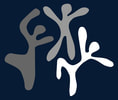
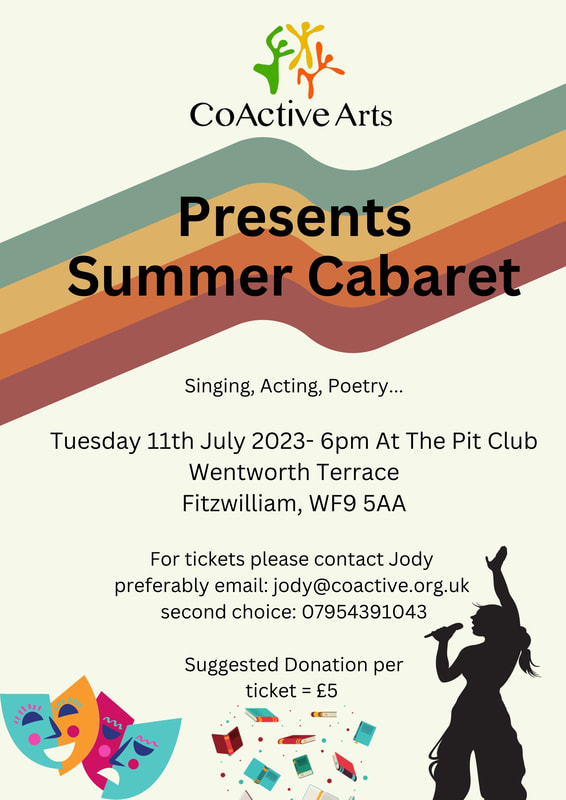

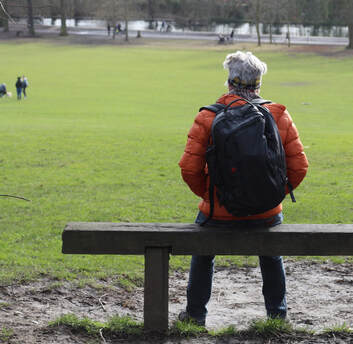
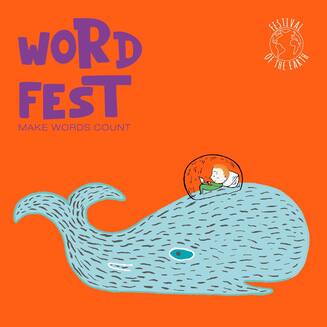
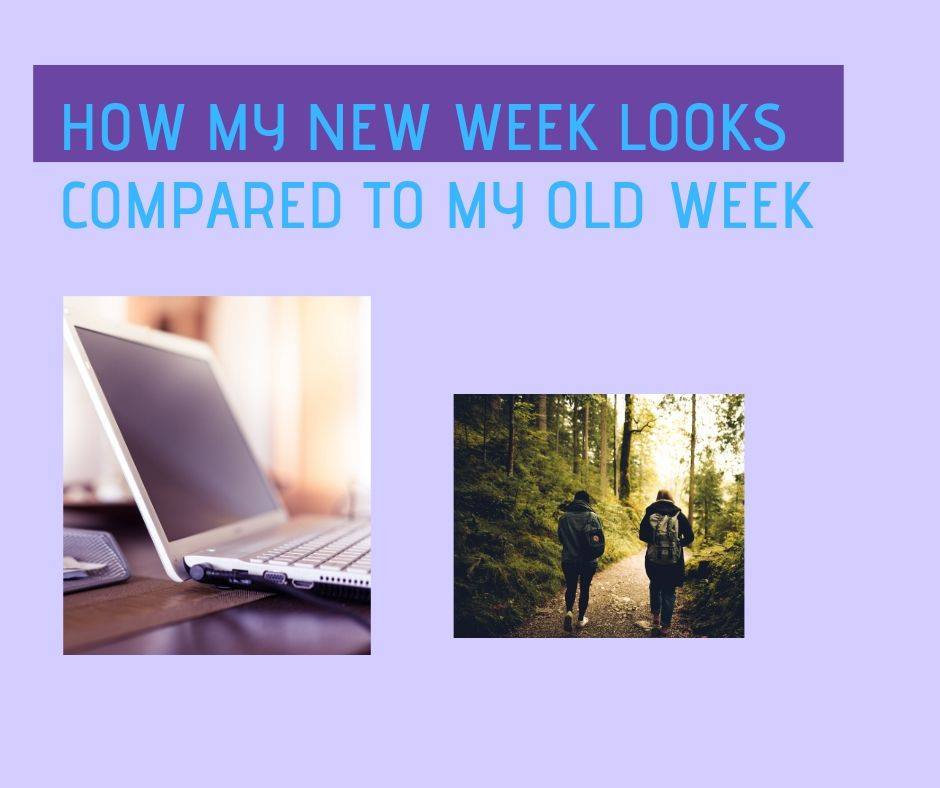
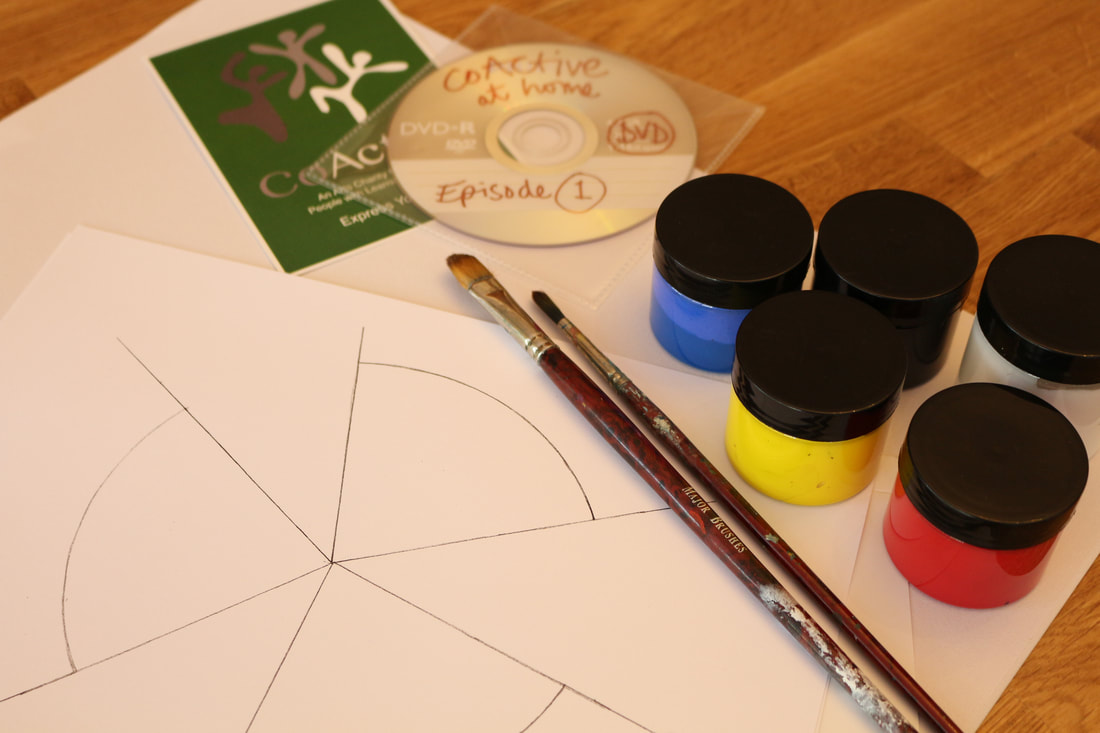
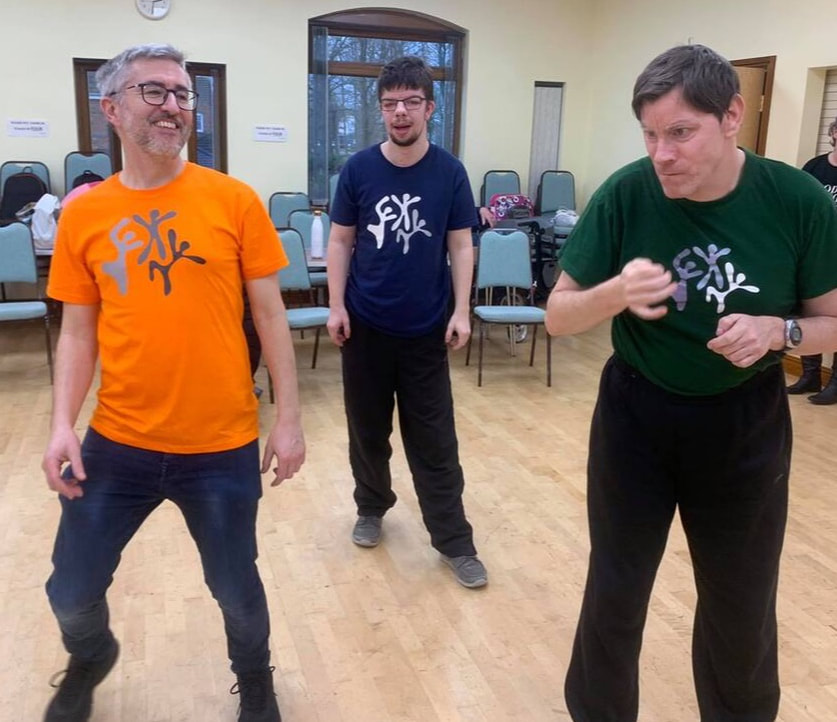
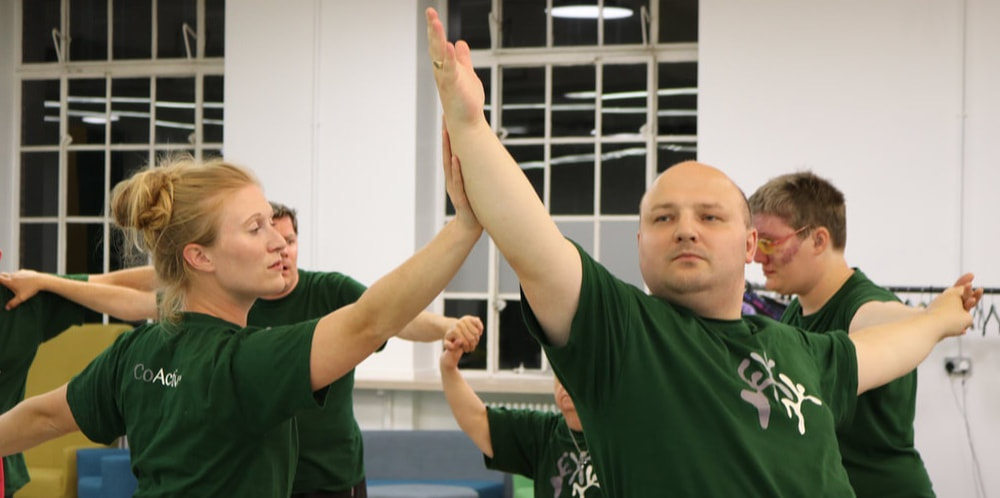
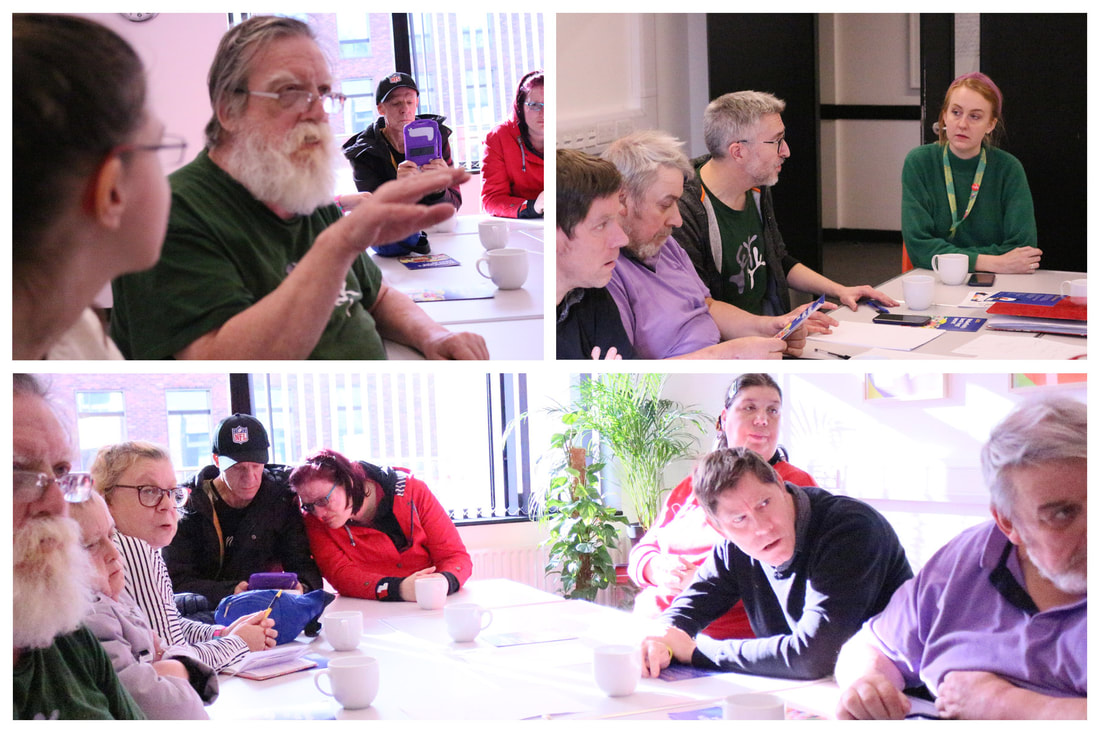
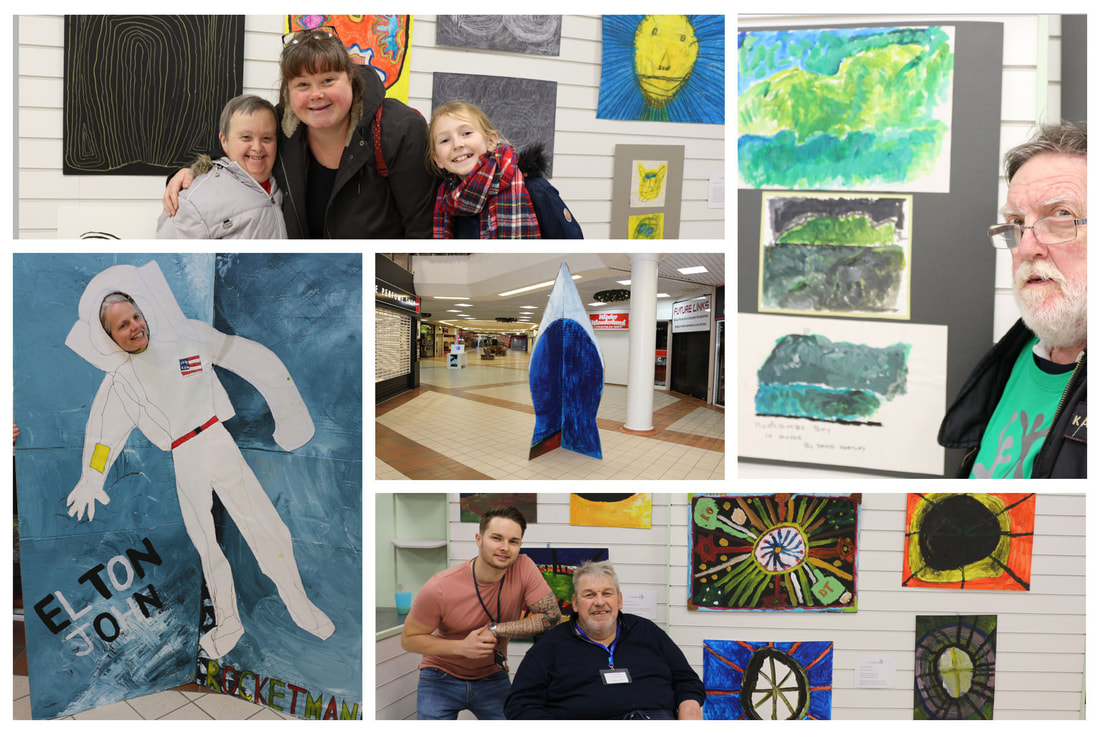
 RSS Feed
RSS Feed
